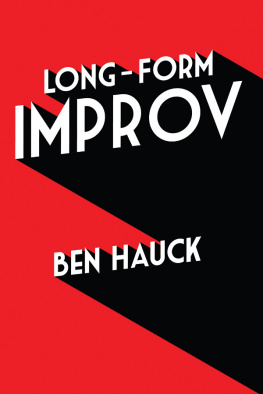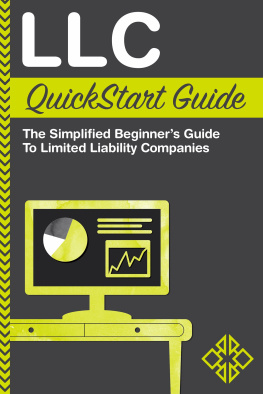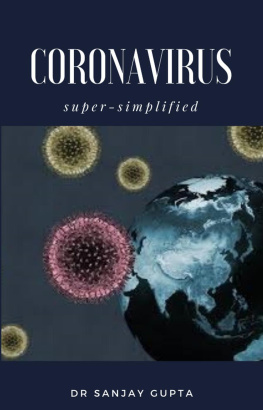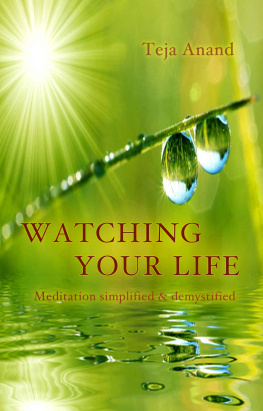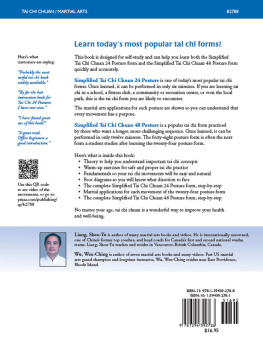Essentials
Essentials
The Simplified 24 Form
Andrew Townsend
TAI CHI ESSENTIALS THE SIMPLIFIED 24 FORMCopyright 2015 Andrew Townsend.All rights reserved. No part of this book may be used or reproduced by any means, graphic, electronic, or mechanical including photocopying, recording, taping, or by any information storage retrieval system without the written permission of the author except in the case of brief quotations embodied in critical articles and reviews.
ISBN-13 978-1514250488To my wife, Deya,
whose grace and strength epitomize the yin and yang of Tai Chi.
Contents
Preface ....................................................................................................................................... ix Acknowldegement s ...................................................................................................................xiii Introduction .............................................................................................................................. xv
Preface
The interest in tai chi worldwide continues to grow as the population in many countries ages and the medical and scientific communities make new discoveries regarding the many health benefits associated with this ancient art. Tai chi classes are now available in almost every community in the U. S., Europe, South America, and in Australia and New Zealand. Of course, in China and the rest of Asia, tai chi has been part of the culture for the past two centuries, ever since Yang Cheng-fu popularized the art in the 1800s in Beijing.
There are many styles of tai chi practiced around the world. The differences in styles is due in large part to the diffusion of the art in the latter part of the nineteenth century and into the twentieth century, first within China, subsequently into southeast Asia, and later into the Western world as Chinese practitioners and masters emigrated to the U. S., Canada, Europe, Australia, New Zealand, and South America. The varieties of tai chi that exist today are due largely to the distinction between differing family styles. There are five major family styles of tai chi: Chen, Yang, Wu, Hao, and Sun. Within each of these major divisions there are many variations which are the result of the personalities and unique characteristics of the individuals who continued to make modifications to the art that they learned from their teachers.
Within all these different styles and forms of tai chi, there are common threads that tie them together. These are the fundamental principles of tai chi and Taoism. These principles can be found in the Tai Chi Classics as well as in the verses of the Tao Te Ching , written by Lao Tzu. The Tai Chi Classics are a collection of works written by past tai chi masters and scholars of the art who articulated the fundamental principles of the art of tai chi in short poems and songs. All tai chi masters agree that, no matter what style or form of tai chi you practice, if you follow the principles of the art as presented in the Tai Chi Classics and the Tao Te Ching of Lao Tzu, then you will be practicing correctly.
Among all the different styles and forms of tai chi practiced today, there is one form of tai chi that is particularly suited to the beginning tai chi practitioner. This is the Simplified 24 Form. This form
Andrew Townsendwas developed by a committee of martial arts experts headed by Professor Li Tianji in Beijing in 1956. The underlying objective for the development of this form was to create a short, simple version of tai chi that could be easily learned and could be practiced by individuals of any age or ability. This form was sanctioned by the Communist government and was widely practiced throughout China by workers, students, and pensioners as a means of improving their health and increasing their longevity. Due to its popularity and ease of learning, it is still the most widely practiced form of tai chi in China today.
Unlike many other forms of tai chi, the Simplified 24 Form has remained essentially the same for the past sixty years, largely through the effort of Li Tianjis nephew, Professor Li Deyin. Professor Li Deyin has trained thousands of individuals in this form, and many of his students are goldmedal winners in both national and international tai chi competitions. Prof. Li Deyin continues to travel worldwide to promote the Simplified 24 Form and other forms that he has developed, such as the Combined 42 Competition Form, the 32 Tai Chi Sword Form, and the Tai Chi/Kung Fu Fan Form.
My present tai chi teacher, Grandmaster Jesse Tsao, with whom I have studied since 2003, studied intensively with Prof. Li Deyin for more than ten years in Beijing, winning a number of medals in martial arts competitions during that time. Through Grandmaster Tsao, I was able to meet Prof. Li and to study with him on several occasions here in the United States. During these intensive weekend workshops, I was able to learn directly from Prof. Li and to receive corrections in the Simplified 24 Form.
I have been a student of tai chi and chi gung for more than twenty-five years and have been actively teaching tai chi, including the Simplified 24 Form, for the past ten years. I was certified as a tai chi teacher by Dr. Tsao in 2005. Since that time, I have taught the Simplified 24 Form to hundreds of students. In addition to teaching tai chi to beginning students, I also work with more experienced tai chi practitioners who want to improve their form and who also want to experience the internal aspects of the art. One of the primary emphases in my teaching, both with beginning and more advanced students, is learning to cultivate and circulate their internal energy, or chi.
If one practices tai chi without experiencing the build-up and subsequent circulation of chi, then that practice will remain superficial. The many health benefits that derive from the regular and ongoing practice of tai chi are the result of the cultivation and circulation of chi that occur when performing the tai chi form. I refer to this as the chi effect. In order to experience this chi effect, the student must learn from an experienced teacher who knows how to instruct in such a way that the form is practiced correctly, which is to say in a loose and relaxed manner with proper body mechanics and the appropriate mental attitude. The instructor must also know the methods for chi cultivation and circulation, and must, in addition, be able to convey this knowledge to his or her students.
x
Tai Chi EssentialsRecently one of my advanced students asked me to help prepare her to become a certified tai chi instructor through Grandmaster Tsaos instructor certification program. I agree to assist her, and I offered to write down the important points to be observed when performing each of the twentyfour postures of the Simplified 24 Form. I quickly realized that this was quite a daunting task. It also occurred to me that many other individuals would benefit from such a detailed analysis of the Simplified 24 Form.
It is with that purpose that I have put together this present guidebook. This book not only contains detailed instructions on the execution of the individual postures of the form, but also includes a compendium of general information on the philosophy and theory that underlie the art of tai chi. In addition, there are chapters that explain the fundamental principles of tai chi as well as describe the basic techniques and skills needed in order to perform the postures correctly. The information provided in these preliminary chapters is applicable to all styles of tai chi.
I hope that all students interested in beginning the practice of tai chi, as well as individuals who are already in the process of learning the Simplified 24 Form, will benefit from the information I have included in this book. Even students who have learned this form and have been practicing it for some time are likely to benefit from a review of the general principles as well as the details for performing the individual postures.


